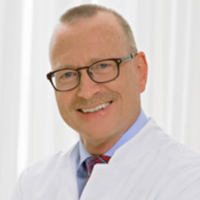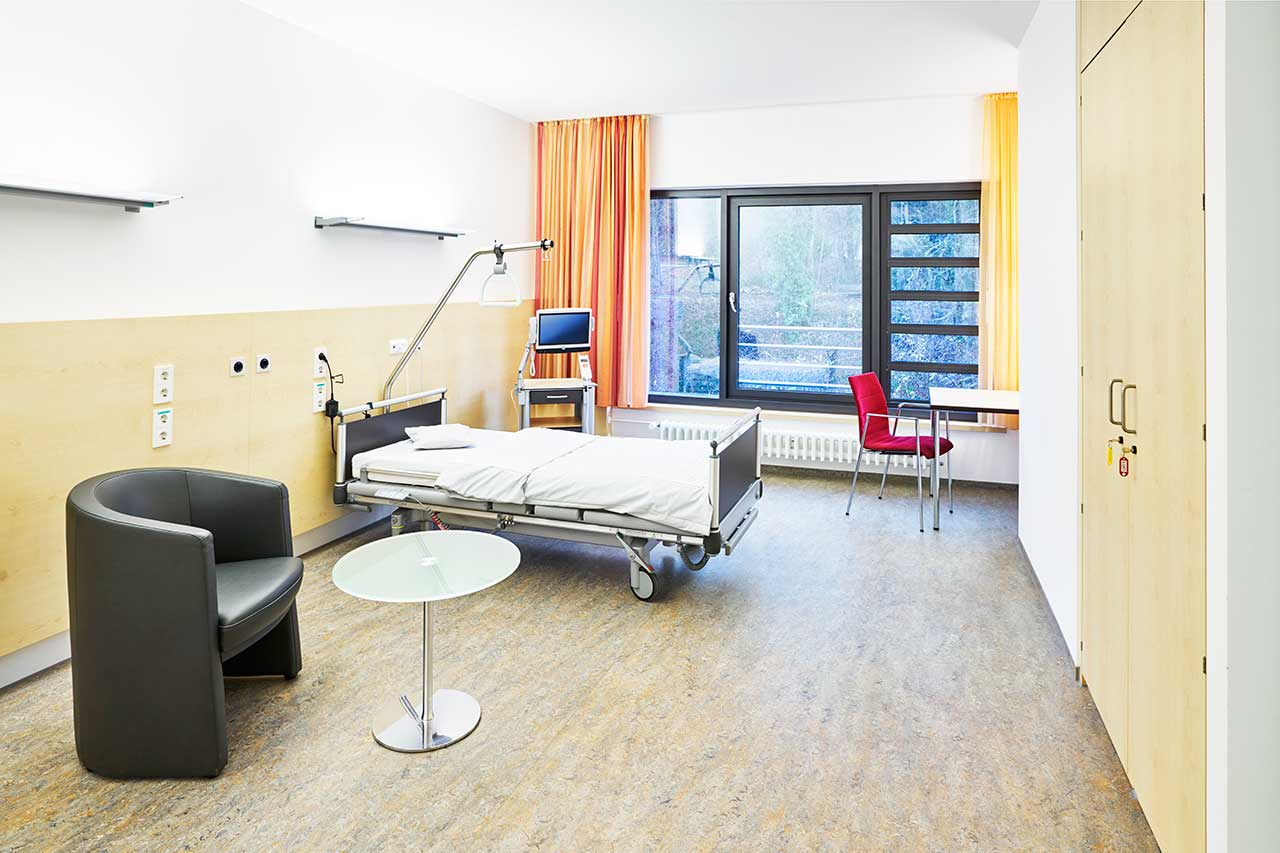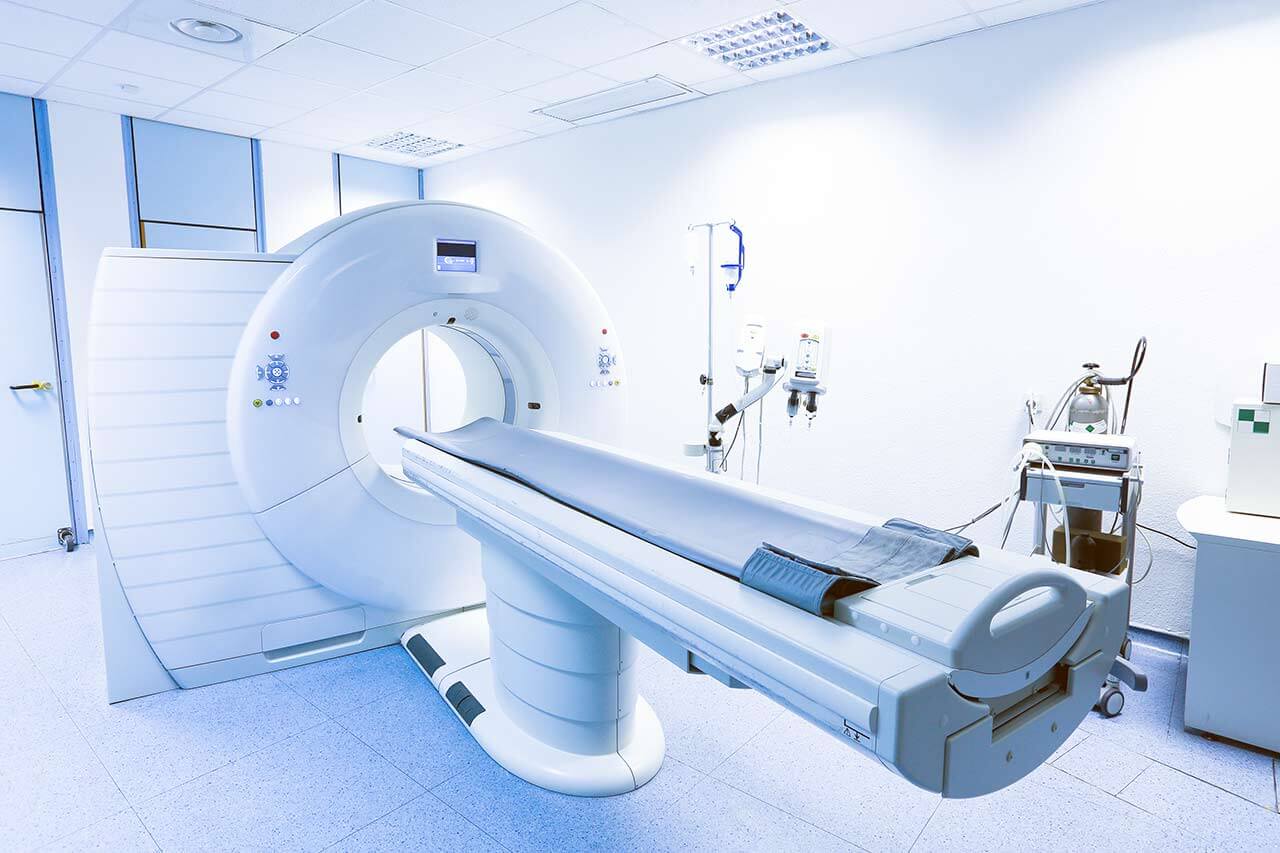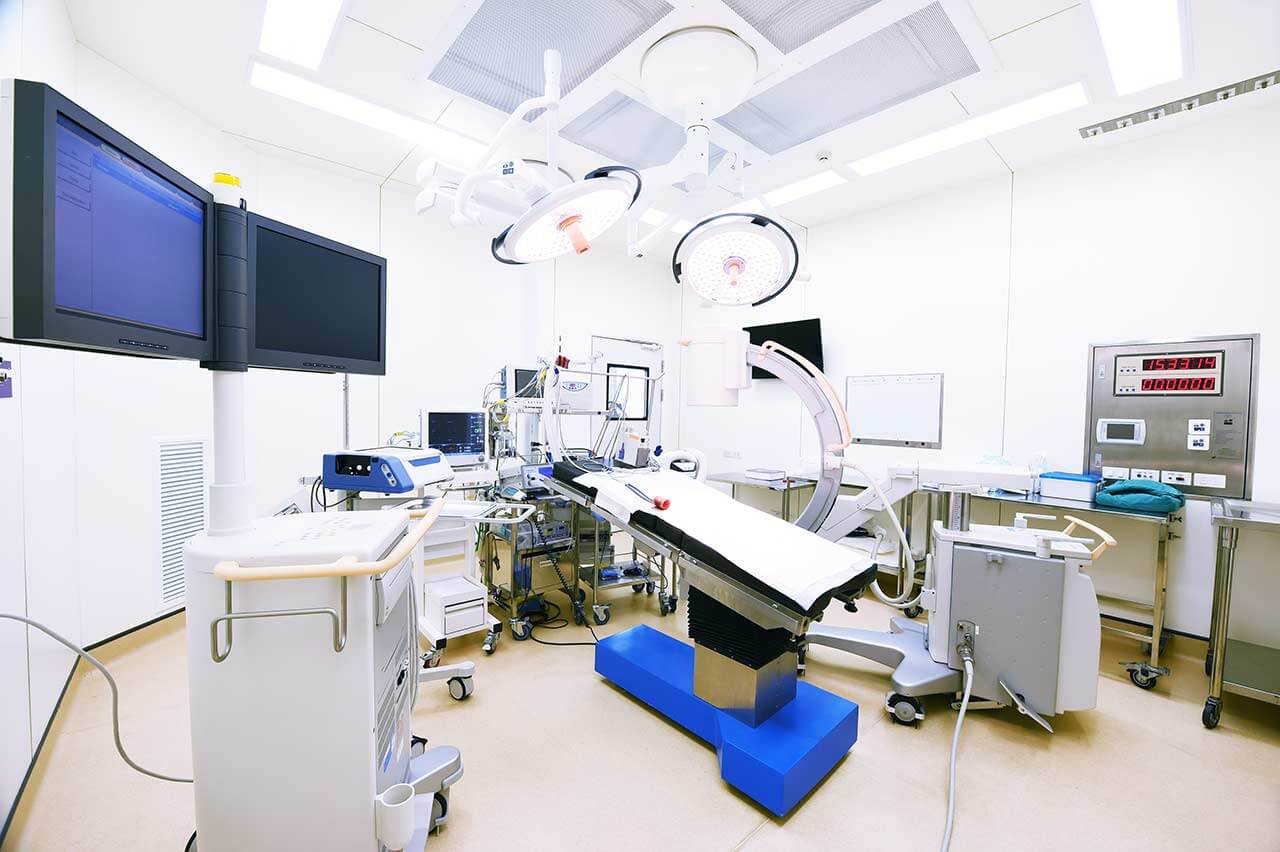
The program includes:
- Initial presentation in the clinic
- clinical history taking
- physical examination
- laboratory tests:
- complete blood count
- general urine analysis
- biochemical analysis of blood
- TSH-basal, fT3, fT4
- indicators of inflammation
- indicators blood coagulation
- doppler/ duplex vessels of lower extremities
- angiography/ Angio-MRI
- biopsy and histological examination
- preoperative care
- holding amputation
- wound care
- symptomatic treatment
- cost of essential medicines
- nursing services
- stay in the hospital with full board
- full hospital accommodation
- elaboration further recommendations
Required documents
- Medical records
- Doppler ultrasound/duplex scanning (if available)
- Angiogram (if available)
Service
You may also book:
 BookingHealth Price from:
BookingHealth Price from:
About the department
The Department of Vascular Surgery at the University Hospital Erlangen offers the full range of diagnostics and surgical treatment of vascular diseases. The department specializes in the surgical treatment of carotid artery stenosis, open and endovascular treatment of abdominal aortic aneurysm, as well as in the treatment of occlusive peripheral arterial disease. In addition, the department deals with the treatment of patients with venous diseases and diabetic foot syndrome. The priority areas of work of vascular surgeons also include the correction of both common and rare types of vascular malformations. The department's specialists cooperate closely with interventional radiologists and angiologists, so patients can count on an interdisciplinary approach to treatment. Surgical treatment is carried out in progressive operating rooms with state-of-the-art surgical equipment and computer-assisted systems for vital signs monitoring. The department successfully uses sparing endovascular techniques to avoid severe postoperative complications and minimize postoperative pain. The optimal type of surgical treatment is prescribed to the patient based on his specific clinical indications, stage of vascular disease, general health condition, age and other decisive factors. Whenever possible, preference is given to minimally invasive surgery. The department is headed by Prof. Dr. med. Werner Lang.
The department's medical team successfully performs surgical procedures for abdominal aortic aneurysms. An aneurysm is a saccular enlargement of the artery wall. In most cases, surgical interventions become an option of choice only for patients with large aneurysms, the further growth of which can cause irreversible pathological changes or even death. Depending on the particular clinical case, the surgery for abdominal aortic aneurysm involves the replacement of the affected area of the aorta with a synthetic vascular prosthesis or stent implantation. The decision is made at the stage of preparation for the operation and depends on the patient's general health condition, as well as the size, shape and location of the aneurysm. The availability of advanced technical resources in the department allows performing modern endovascular treatment, which has many advantages over classical open surgery. As of today, endovascular interventions represent the most innovative form of surgical treatment. Operations are performed inside the vessel with the use of a special catheter. The catheter is inserted through a small incision in the femoral artery in the groin. The surgeon then places a stent for the aortic wall reinforcement or repairs the affected area of the aorta with a prosthesis. The procedure is performed under real-time imaging guidance, which allows the surgeon to accurately control the entire process. Once the operation is completed, the patient will spend only 2-3 days in the hospital. In the future, patients are advised to undergo regular medical examinations in order to monitor the condition of the implanted stent.
The doctors of the medical facility also specialize in the surgical treatment of various venous diseases. The department quite often deals with the treatment of patients suffering from varicose veins, chronic venous insufficiency, trophic ulcers, deep vein thrombosis, spider veins. As a rule, first-line therapy is conservative treatment: the use of ointments, pills, injection therapy, compression therapy, physiotherapy, laser procedures, etc. If the conservative methods are ineffective and the patient has not got rid of the pathology, the department's doctors resort to surgical interventions. The department offers all advanced surgical techniques, including venectomy, saphenectomy, cryosurgery, cryosclerotherapy, stripping, microphlebectomy, etc. Conventional venectomy involves the removal of the trunk of the great or small saphenous veins. Saphenectomy is indicated for decompensated varicose veins. Cryosurgery involves inserting a special probe into a vein, which is cooled to -90 °C and thereby freezes the affected area for follow-up removal using the same probe. Cryosclerotherapy is an analogue of cryosurgery. During the operation, doctors inject nitrous oxide into the vein, which cools the blood and leads to gradual degradation of the vessel before its subsequent removal. The department's surgeons successfully use stripping to remove the affected area of the saphenous vein on the lower leg or thigh. The intervention is performed under duplex scanning guidance, which allows the doctors to accurately determine the location of the affected vein; the surgeon then makes two small incisions, through which he removes the affected areas of the vein. Microphlebectomy is a completely painless procedure for varicose vein removal. The intervention serves to remove veins through miniature punctures using a special medical instrument. The most advanced method used in the department is laser coagulation. The specialists act with a laser on the inner wall of the vein and thereby obliterate (close) the affected areas. For a month after the procedure, doctors recommend wearing a compression bandage for rapid recovery and edema elimination.
The department's doctors can boast of special experience in the treatment of patients with various vascular malformations, including rare ones. The specialists strive to completely eliminate the pathology and preserve the function of the affected blood vessel. The department offers several types of therapy, which are prescribed based on the results of a preliminary examination. To make an accurate diagnosis, doctors use such diagnostic methods as duplex sonography, most advanced CT and MRI scanning, angiography and others. For the treatment of microfistular lesions of small vessels, the department's specialists use laser therapy. The laser penetrates the pathologically altered vessels and coagulates them without damaging the skin. The final result of the treatment can be assessed 2-4 months after the procedure. The department also performs sclerotherapy and vascular embolization. Sclerotherapy is used for lymphatic and venous malformations. The essence of the procedure is to inject a special drug into the lumen of the vessel, which glues and clogs the walls of the vessel. This method is minimally invasive and provides an optimal functional and aesthetic result. The treatment of arteriovenous fistulas involves the use of embolization: transarterial, transvenous or percutaneous. The goal of the procedure is to close the vessels supplying the malformation with emboli. In addition, the team of the department's vascular surgeons successfully performs microsurgical resection of pathological foci (partial and total).
The department admits patients with diabetic foot syndrome, which is one of the most common complications caused by diabetes mellitus. Such patients are provided with special consultations with the participation of vascular surgeons and endocrinologists. A decisive role in the treatment success is played by the timely seek for competent medical care, which will help prevent the progression of the pathology and, in the worst case, loss of the limb. First, doctors carry out comprehensive diagnostics in order to confirm or exclude the diagnosis. If diagnostic data confirm the presence of diabetic foot syndrome, the specialists begin to plan therapy. The advanced stages usually require surgical treatment. The department's vascular surgeons are competent in performing necrectomy for removing nonviable tissues, balloon angioplasty and bypass surgery to normalize blood flow in the lower limbs. The surgical intervention is complemented by antibiotic therapy and local drug therapy. Also, special orthopedic shoes are selected for patients, which reduce pressure on the affected areas of the foot. With timely treatment, the department's specialists manage to restore blood flow and avoid limb amputation. The prevention of pathology plays a significant role as well, since most patients with diabetes mellitus are at risk of developing this complication.
The department's main clinical focuses include the diagnostics and treatment of the following diseases:
- Abdominal aortic aneurysm
- Catheter stenting under CT and 3D planning computer system guidance
- Classical surgery (in rare cases)
- Arteriosclerosis (individual treatment regimens in cooperation with the Department of Radiology)
- Balloon dilation under local anesthesia
- Stent implantation
- Bypass surgery
- Carotid artery stenosis
- Specific surgical procedures for carotid artery stenosis, which help prevent stroke
- Venous disease (for example, varicose veins, thrombosis)
- Venectomy
- Saphenectomy
- Cryosurgery
- Cryosclerotherapy
- Stripping
- Microphlebectomy
- Vascular malformations, including rare ones
- Laser therapy
- Sclerotherapy
- Vascular embolization
- Microsurgical resection
- Other diseases of the vascular system and treatment methods
Curriculum vitae
Working Experience
- Since October 1995 Head of the Department of Vascular Surgery at the University Hospital Erlangen, Germany.
- January 1993 - September 1995 Chief Resident, Department of Vascular Surgery, University Hospital Erlangen, Germany.
- March 1986 - January 1993 Resident, Department of Surgery, University Hospital Erlangen, Germany.
- March 1985 - March 1986 Internship, Institute of Anatomy, Friedrich-Alexander University of Erlangen-Nuremberg, Germany.
- January 1984 - February 1985 Captain in the Medical Corps, Bundeswehr, Germany.
Education and Training
- 1977 - 1983 Medical Student, Friedrich-Alexander University Erlangen-Nuremberg, Germany.
- 1984 - 1984 Doctorate, Friedrich-Alexander University Erlangen-Nuremberg, Germany.
- 1996 Postdoctoral lecturing qualification, Assistant Professor, Friedrich-Alexander University Erlangen-Nuremberg, Germany.
- 2003 Professor of Surgery, Friedrich-Alexander University Erlangen-Nuremberg, Germany.
- 1993 General Surgeon, Bavarian Medical Association, Germany.
- 1994 Vascular Surgeon, Bavarian Medical Association, Germany.
- 1994 Phlebologist, Bavarian Medical Association, Germany.
- 2005 Fellow of the European Board of Vascular Surgery (FEBVS), Union of European Medical Specialists, Brussels, Belgium.
Clinical Focuses
- Vascular medicine.
- Carotid artery stenosis.
- Aneurysms.
- Peripheral arterial occlusive disease.
- Phlebology.
- Wound management.
Memberships
- Honorary Member, Hungarian Society for Vascular Surgery.
- Board of Examiners, Bavarian Medical Association.
- Member of the European Society of Vascular Surgery (ESVS).
- Member of the Society of Vascular Surgery (SVS).
- Member of the Vascular and Endovascular Surgery Society.
- Member of the Austrian Society for Vascular Surgery.
- Member of the German Society of Ultrasound in Medicine (DEGUM).
Photo of the doctor: (c) Universitätsklinikum Erlangen
About hospital
According to the Focus magazine, University Hospital Erlangen ranks among the best medical facilities in Germany!
The hospital is one of the leading healthcare facilities in Bavaria and offers top-class medical care distinguished by the close intertwining of clinical activities with research and training of medical students. The hospital was founded in 1815 and today is proud of its rich traditions, numerous medical achievements and an excellent reputation not only in Germany, but also in the international arena. The hospital has 25 specialized departments, 7 institutes and 41 interdisciplinary centers, whose experts work tirelessly for the benefit of their patients.
The hospital has the status of a maximum care center, and therefore it represents almost all fields of modern medicine. Oncology, transplant medicine, and robot-assisted surgery are among the top priorities of the clinical activities of the medical complex. Oncology is represented by the Comprehensive Cancer Center Erlangen, which is one of 13 centers of excellence in Germany certified by the German Cancer Society. The university hospital has a high-tech center with high success rates for heart, liver, kidney, pancreas, cornea and bone marrow transplants. In addition, the hospital is a leader in the use of robot-assisted surgery. The medical facility has at its disposal innovative robotic technologies, in particular the da Vinci Surgical System, with the help of which surgeons perform many sparing interventions in various medical fields.
The medical team of the hospital consists of highly professional therapists, surgeons and nursing staff. The focus of their efforts is on the patient, his health and peace of mind, as well as comfort during treatment. The clinical practice of doctors is based on an individual approach to each case, which results in high treatment success rates. State-of-the-art technical equipment also plays an important role in the therapeutic process. The hospital is proud of the most advanced devices for imaging diagnostics (X-ray, ultrasound, CT, MRI, PET-CT, SPECT-CT, etc.), endoscopic examinations, laboratory tests, as well as specially equipped operating rooms for robot-assisted interventions, image-guided therapeutic manipulations, minimally invasive and classical surgeries of any complexity. Thus, the doctors of the university hospital have all the necessary resources to effectively treat the most severe pathologies and save lives.
The combination of high-tech equipment, experienced and highly qualified personnel, as well as strict adherence to the standards of modern medicine, form a solid foundation for the provision of the best medical care at the European level. An undeniable proof of the high prestige of the hospital is the constantly growing number of patients who come here from various regions of Germany and other countries of the world.
Photo: (с) depositphotos
Accommodation in hospital
Patients rooms
The patients of the University Hospital Erlangen live in comfortable rooms with light colors and modern design. Each patient room has an ensuite bathroom with shower and toilet. The furnishing of the patient room includes an automatically adjustable bed with an orthopedic mattress, a bedside table, a wardrobe, a table and chairs for receiving visitors, a TV, a radio and a telephone. Wi-Fi can be provided upon request. The use of a mobile phone is prohibited in many rooms of the hospital.
Patients can also live in enhanced-comfort rooms with a more sophisticated design. The enhanced-comfort rooms additionally include upholstered furniture, a minifridge and a safe.
Meals and Menus
The hospital offers healthy and tasty food distinguished by many awards, including the 1st place in the prestigious ESSEN PRO GESUNDHEIT competition of the Bavarian State Ministry of the Environment and Consumer Protection.
The patient and the accompanying person have three meals a day. Breakfast is served buffet style: scrambled eggs, boiled eggs, sausage, cheese, bread and buns with butter and jam, cereals, etc. There are three set menus for lunch and dinner to choose from: a classic menu featuring local cuisine dishes, a Mediterranean menu and a vegetarian menu.
If for some reason you do not eat all the foods, you will be offered an individual menu. Please inform the medical staff about your dietary preferences prior to the treatment.
The hospital also houses many cafeterias, which will delight with a wide range of delicious dishes and drinks.
Further details
Standard rooms include:
Religion
The hospital regularly hosts catholic and evangelical devine services. The services of representatives of other religions are available upon request.
Accompanying person
During an inpatient program, an accompanying person can stay with you in the patient room or in a hotel of your choice.
Hotel
During an outpatient program, you can stay in a hotel of your choice. The managers will help you choose the most suitable options.




